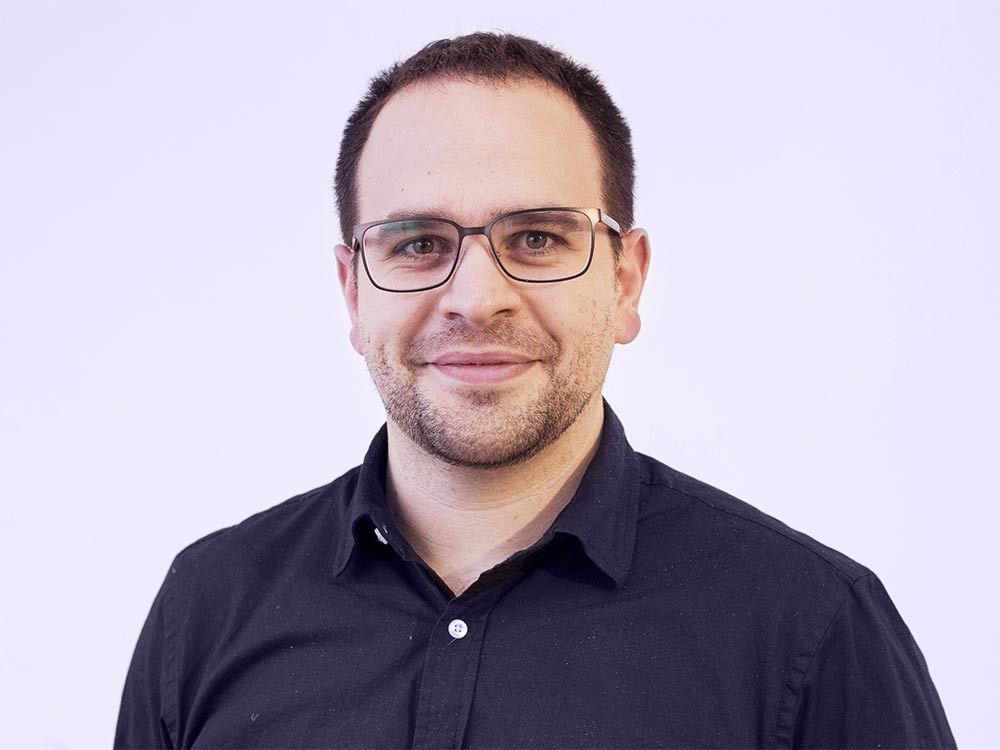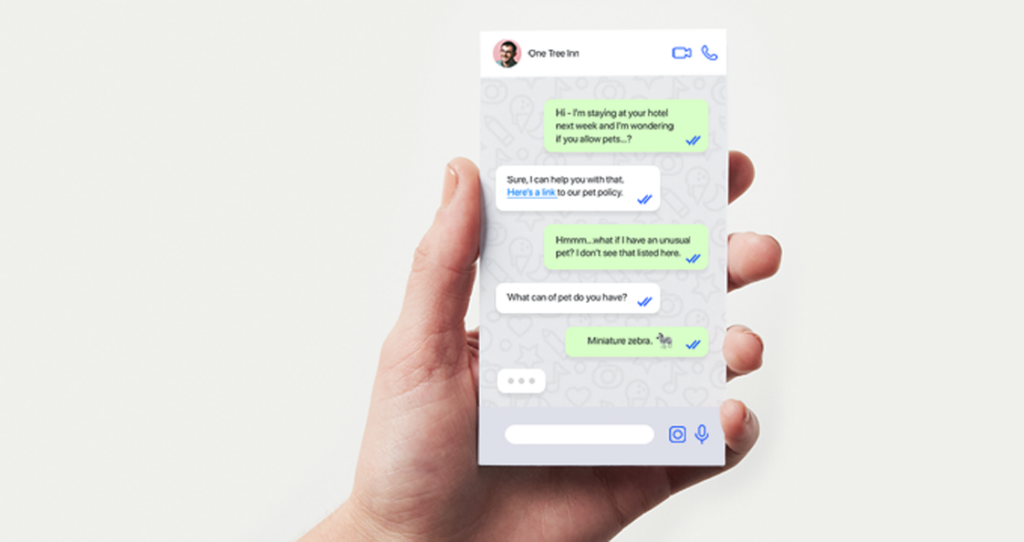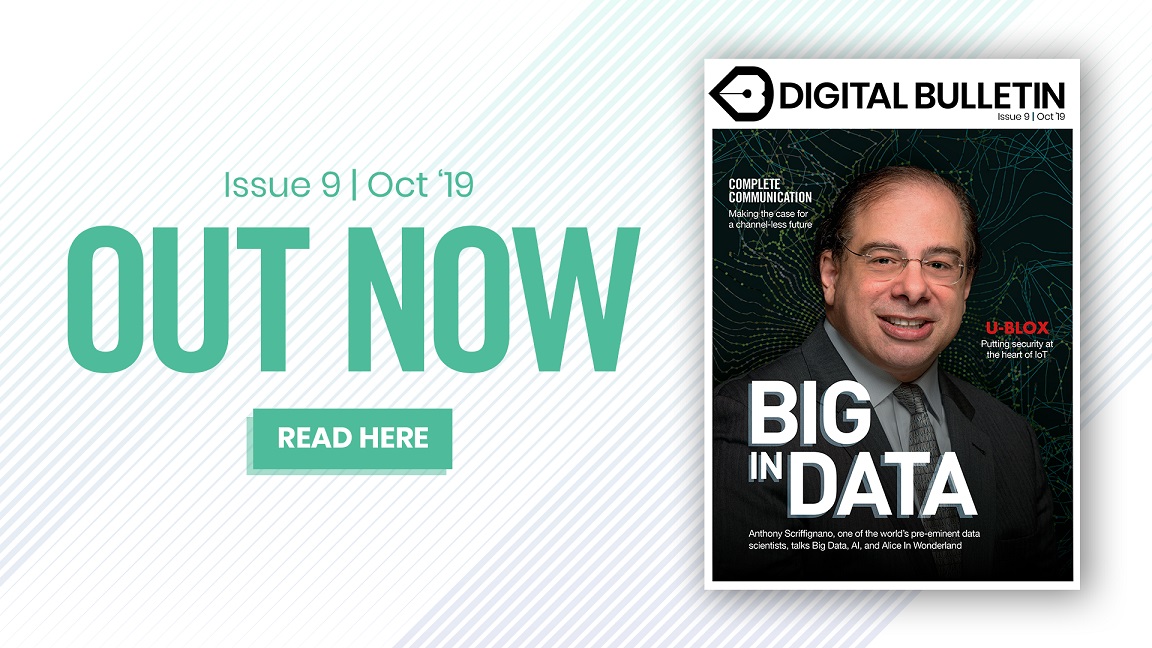
For years, marketers have obsessed over the concept of ‘omnichannel communication’. As consumers landed on more and more platforms, brands recognised the need to engage with them in those places.
Yet the searing expectations of today’s customers are seeing leaders in this technology move away from omnichannel and towards a new trend in B2C communication: channel-less.
Mike Gozzo is a co-founder of Smooch, a company with technology capabilities in this field and one fresh from being acquired by customer services giant Zendesk. Gozzo believes that channel-less – where communication is standardised across all messaging platforms – gives people the relationships they desire with businesses.
“What customers want is just to communicate with the company to get their job done,” he tells Digital Bulletin. “They have an expectation that they should be able to reach out to a company on the channel that’s most convenient for them, in terms of who they are and what they’re doing. Whoever they are, they need a channel that works for them.”
This shift is reflected in the renewed focus of Facebook, owner of three of the most popular messaging platforms: WhatsApp, Facebook Messenger and Instagram Direct. In a blog post from March, Mark Zuckerberg put these communication channels at the centre of his company’s privacy-based strategy. “I believe a privacy-focused communications platform will become even more important than today’s open platforms,” he wrote.

The numbers back up this assertion. WhatsApp and Facebook Messenger are growing at 30% year-on-year, outstripping Facebook itself. They have a combined user base of 1.6 billion people around the world according to Facebook’s own data from 2019 Q2. Libra, Facebook’s much-anticipated cryptocurrency, is purpose-built for this expanding private communications network.
Enterprise cannot afford to ignore this trend – more than two thirds of consumers say messaging is their preferred way to communicate with businesses – but exactly how can companies ensure consistent levels of service in this messaging labyrinth? That is where Smooch, with its channel-less approach, comes in.
“It’s a big validating move when Facebook does this,” says Gozzo. “It provides a lot of opportunities for Zendesk and others in our space to really build on. We’re excited by these moves and it’s just one more piece of evidence that messaging is leading the world.”
Smooch’s platform, the ‘Smooch Conversation Cloud’, gives developers the opportunity to add messaging and conversational capabilities to their software. It takes popular platforms, including Android and iOS services as well as Facebook Messenger and WhatsApp, and unifies them into a single format. Businesses then use its API to consolidate these channels, engage in dialogue with customers and organise the emerging data.
Gozzo likens the process to a pipeline. At the top of the ‘pipe’, there is a layer of technology called a multi-channel translator that takes the different data representations the channels provide and encodes them in one common, universal format. This information is then associated with the customer and distributed to systems that need to access it. At the other end of the pipe, there is a set of business applications that need to consume or participate in conversations in order to get their job done.
You’ve probably heard of the concept of a central customer record, which is what the CRM industry has been selling for a very long time. What’s been missing from this central customer record is a central conversation record
The result is an uncomplicated experience for the consumer, delivered across their preferred platforms by either human agents or chatbots.
“What it means is that for brands who want to really have a human, intimate relationship with their customers through messaging, they can have it,” Gozzo explains. “They also know they have the back office support they need from an integration and connectivity perspective to plug it into all sorts of things that their business may be using.”
He expands on the data point, saying integration with Smooch’s platform fundamentally enhances a company’s customer relationship management with a central conversation record. Smooch believes this helps build an ‘holistic customer profile’.
“You’ve probably heard of the concept of a central customer record, which is what the CRM industry has been selling for a very long time,” Gozzo adds. “What’s been missing from this central customer record is a central conversation record.
“As brands begin to have more complex and more long-lasting relationships with consumers, it becomes important to be really good at having a consistent record of conversations that you’re having, and for there to be a source of truth for this. Smooch is the platform that provides this source of truth, and we sell it primarily to brands that are looking to build on this and take advantage of this data in their own applications.”
Smooch’s technology was born from an idea Gozzo and his fellow co-founders – Hamnett Hill and Warren Levitan – had while working on an innovation project at Radialpoint, a Montreal-based technical support company. Radialpoint’s 2016 acquisition by AppDirect generated the funds needed to spin out the idea and create Smooch.
Interest in its product quickly grew but it was with one of its first customers, Zendesk, that Smooch would go on to develop a close relationship. This ultimately resulted in Zendesk’s full acquisition of Smooch in May this year as it looked to enrich its customer support services – but it was a deal that Gozzo, Hill and Levitan were initially tentative to sanction.
“Our first message to them was, ‘guys, it doesn’t make sense to buy our technology because we’re already selling you developer APIs and all the platform you need, you just need to adopt it better internally, and use it in more places in your product,’” reveals Gozzo.

“But as we got deeper and deeper into their rationale for the acquisition, it became clear to us that not only were they aligned to the notion of keeping Smooch as an independent offering to the market so we can continue to grow the business that we love, but we’d also get the benefit of their resources and a lot of the technology they’ve been building. We can really build the CRM of the future and accelerate our product.
“Zendesk takes a beautifully simple approach to customer experience management. They’re looking to build software that can get immediately adopted by businesses with the minimum of fuss, while providing awesome customer experiences.”
As the customer service and messaging worlds see more crossover, Zendesk has strengthened its ties with WhatsApp, announcing its integration with the WhatsApp Business Solution at the beginning of August. This broadens its service, providing a direct WhatsApp phone number for companies using Zendesk and enabling customers to receive business notifications for the likes of purchase receipts, shipping changes or flight times.
With WhatsApp used in over 180 countries globally, this is a key integration for Zendesk – and delivers validation for Gozzo, Smooch and the acquisition.
“WhatsApp has been an incredibly powerful channel and right now Smooch, and therefore Zendesk, is powering more WhatsApp phone numbers than any other messaging provider on the planet,” Gozzo says. “We’re looking to bring all of the capabilities of WhatsApp to the 145,000 customers using Zendesk today, and so far it’s working really well for us.”
Business communication via messaging is only going to proliferate and this will likely have a profound impact on the customer services sector. Humans remain important to the process but the scaling of chatbot technology will underpin the growth projected by Zendesk and others.
A recent survey from Salesforce revealed that 53% of service organisations expect to use chatbots within 18 months, representing a sharp growth rate of 136%. Gozzo puts this down to two factors.
Over the next year or two, companies will begin to roll out purely conversational interfaces. That may be a mix of human and chatbot-powered at first, but it will speak to the notion of no apps, no website, just a conversation
“One is the obvious cost savings of what you can achieve with a chatbot for many of the routine issues,” he explains. “But beyond that, there are a lot of businesses that are looking at chatbots as a new avenue for service delivery as a whole.
“It’s not just a matter of offloading a customer service request; the most forward-thinking companies are thinking about how they use messaging to deliver their service. Food delivery companies, for example, will say, ‘how do we allow somebody to order a pizza or some tacos via messaging entirely, without having to download our app?’
“Over the next year or two, companies will begin to roll out purely conversational interfaces. That may be a mix of human and chatbot-powered at first, but it will speak to the notion of no apps, no website, just a conversation.”
Will these conversational interfaces of the future incorporate the holy grail of the chatbot industry: a truly humanised respondent? Gozzo thinks so eventually – but not at the expense of the workforce.
“It’s a real goal but you look at Hollywood and see these concepts of personal assistants who are emotional and knowledgeable AI agents – actually, I don’t think a chatbot has to be that at all,” Gozzo concludes.
“There is a place for a type of application in our computing sphere where we interact over text and other UI elements in a message stream, rather than through a website or an app. I think that’s how we’re going to see chatbots develop; the move towards replacing humans is actually wrong. We need to think about chatbots as another type of application that we are developing in an acceptable and new way.”



